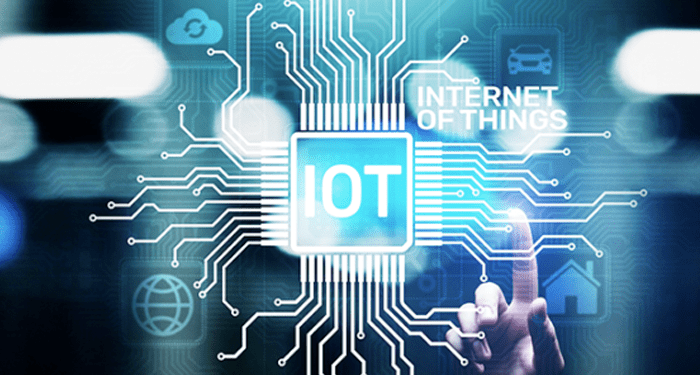Smart technology is becoming increasingly ubiquitous, and the Internet of Things (IoT) is no exception. IoT energy has become a popular tool for homeowners looking to maximize efficiency and reduce costs. Homeowners can now use connected devices to monitor, control, and optimize their energy consumption in order to save money on utility bills. But how exactly does one go about harnessing the power of IoT energy? In this blog post we’ll take a look at some of the most effective strategies for maximizing efficiency in your home with IoT energy. From smart thermostats to solar panels and beyond, learn how you can make sure every watt of energy you use is as efficient as possible.
What is the Internet of Things?
The Internet of Things, often shortened to IoT, is a network of physical objects or “things” that are embedded with electronics, software, sensors, and connectivity mechanisms to enable them to collect and exchange data. In other words, the Internet of Things is a network of connected devices that can communicate with each other and share data.
IoT energy refers to the use of the Internet of Things to manage energy consumption in your home. By connecting devices like thermostats, light bulbs, and appliances to the internet, you can remotely control them and save energy.
There are many benefits of IoT energy. For example, you can save money on your energy bill by turning off devices when you’re not using them. You can also reduce your carbon footprint by using less energy overall. Additionally, IoT devices can provide valuable data that can help you understand your energy usage and find ways to improve your efficiency.
If you’re interested in saving money on your energy bill and reducing your carbon footprint, then harnessing the power of IoT energy is a great way to do it.
How can you save energy with IoT?
One of the most significant advantages of using IoT devices to manage your home’s energy usage is the potential to greatly reduce your energy consumption and costs. By monitoring and analyzing your energy use patterns, you can make changes to your habits and equipment that will result in big savings.
Here are some specific ways you can use IoT to save energy in your home:
1. Use a smart thermostat: A thermostat that is connected to the internet can be programmed to automatically adjust the temperature based on your schedule, the weather outside, and other factors. This can help you avoid wasting energy by heating or cooling an empty house.
2. Install occupancy sensors: These sensors can be placed in strategic locations around your home, such as in hallways and bathrooms. They will turn off lights and appliances when no one is present, which will save energy that would otherwise be wasted.
3. Get real-time feedback on your energy consumption: Many IoT devices come with apps that allow you to see how much power you are using at any given moment. This information can be very helpful in understanding where you are wasting energy so that you can make changes accordingly.
What are the best IoT devices for saving energy?
When it comes to saving energy, there are a lot of different IoT devices that can be extremely helpful. Some of the best IoT devices for saving energy include smart thermostats, LED light bulbs, and even smart power strips.
Smart thermostats are great because they allow you to program your heating and cooling system to operate more efficiently. LED light bulbs use less energy than traditional incandescent bulbs, so they’re a great way to save on your electric bill. And smart power strips can help you save energy by cutting off power to electronics that are not in use.
So if you’re looking for ways to save energy and reduce your carbon footprint, these are some of the best IoT devices to consider using in your home.
How to get started with saving energy using IoT
IoT energy saving devices are becoming increasingly popular as people look for ways to reduce their carbon footprint and save money on their energy bills. There are a number of different ways to get started with using IoT to save energy, and the following tips will help you maximize efficiency in your home.
1. Invest in smart devices: Smart thermostats, light bulbs, and power strips are just a few of the many types of devices that you can now purchase that are designed to save energy. These devices can be controlled via your smartphone or tablet, so you can easily manage your home’s energy usage even when you’re not at home.
2. Educate yourself on proper usage: Once you have invested in some smart energy-saving devices, it’s important to educate yourself on how to properly use them in order to maximize efficiency. For example, you should make sure that your lights and electronics are turned off when you’re not using them, and that your thermostat is set to an appropriate temperature for the current season.
3. Monitor your progress: Many smart devices come with apps that allow you to track your energy usage over time. This data can be helpful in identifying patterns and areas where you can improve your efficiency. Additionally, many utility companies now offer online tools that allow you to track your energy usage as well, so be sure to take advantage of these resources as well.
Conclusion
All in all, it is clear that by harnessing the power of IoT energy and creating an efficient home environment, you can save both time and money. By utilizing smart technology such as automated lighting systems, smart thermostats, and other easy-to-use devices, you can easily keep your electricity bills low while still having a comfortable environment to live in. Additionally, using these devices also reduces your carbon footprint on the planet which is always a worthwhile effort. As technology continues to evolve rapidly in this day and age so does our ability to create more efficient homes for ourselves with IoT energy being at the forefront of these efforts.
















